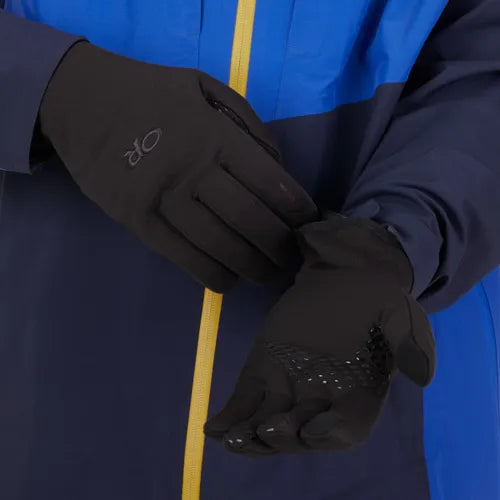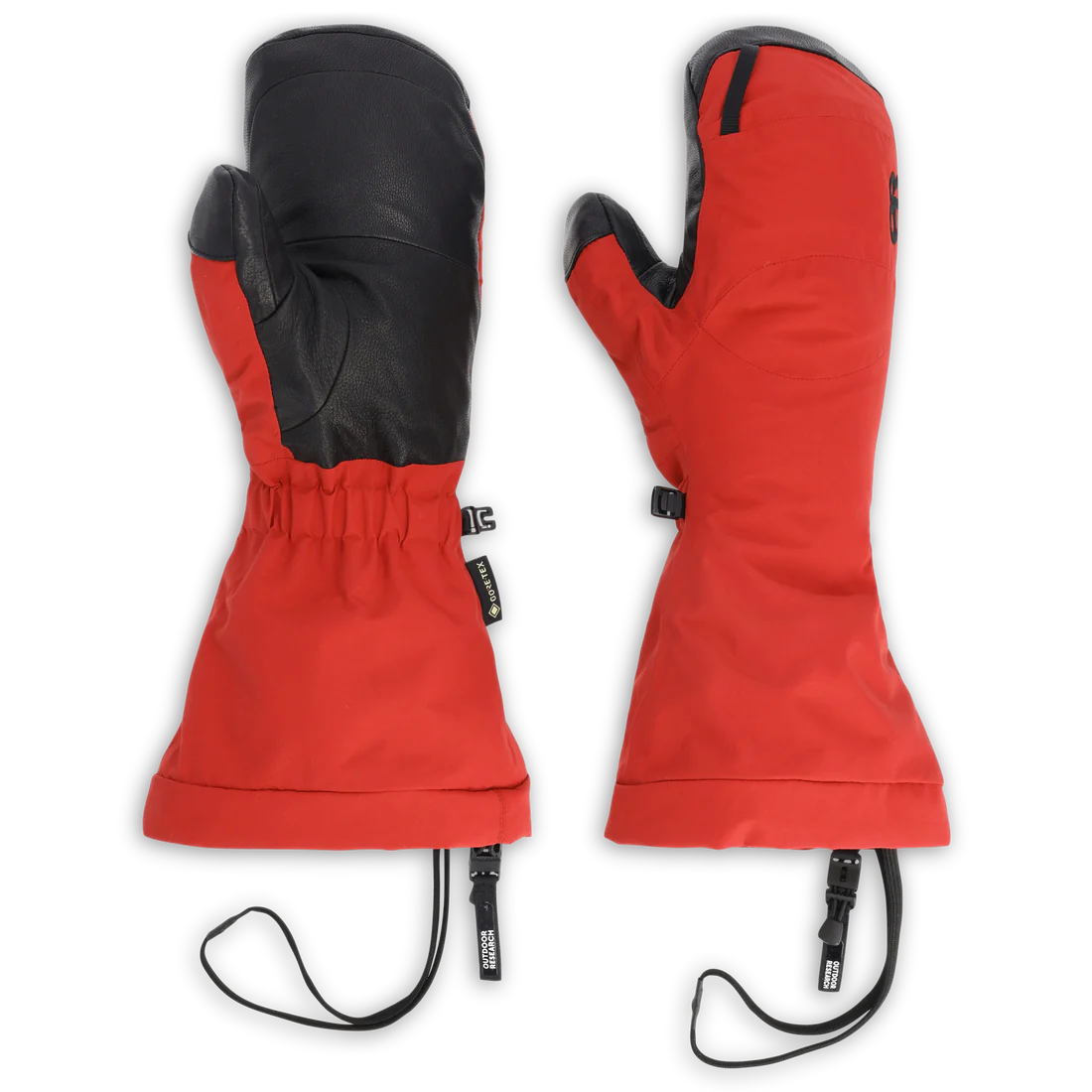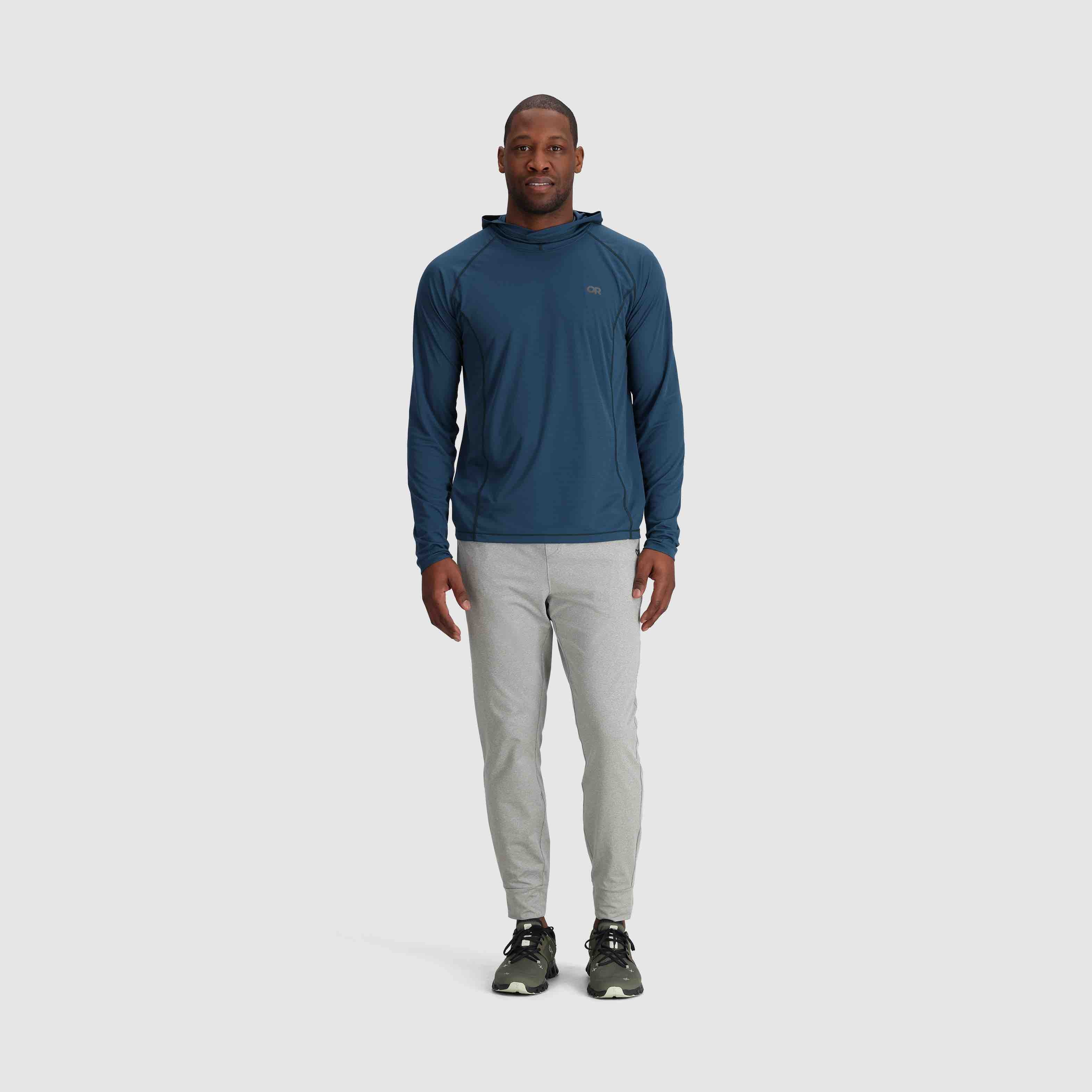Ever faced the bitter sting of winter's icy grip while trekking up a snow-kissed mountain? Or perhaps you've felt your hands go numb, losing their hold on a tricky incline during an autumn hike. The culprit is usually overlooked: unprotected hands. Yes, my friends - we're talking about hiking gloves.
The unassuming yet vital piece of kit that often falls to the bottom of our packing list. Why are they so important though? Is it just for warmth or do they serve another purpose?
This post will unveil the secrets behind these unsung heroes and guide you through choosing the perfect pair of hiking gloves suited to your needs and activities – be it mountain biking or hiking in extreme weather conditions.
- The Necessity And Benefits Of Hiking Gloves
- Why Invest In Quality Hiking Gloves?
- What Makes Hiking Gloves Special?
- Different Types Of Hiking Gloves
- Liner Gloves Vs Insulated Gloves
- Choosing Your Perfect Pair - Factors To Consider
- Weather Resistance
- Grip And Dexterity
- Fitting And Comfort
- Hiking Gloves For Specific Activities
- Gloves For Road Cycling And Snow Sports
- Caring For Your Hiking Gloves
- Cleaning Techniques For Hiking Gloves
- Drying Your Gloves Properly
- Storing Your Hiking Gloves Correctly
- Finding Your Perfect Pair
- A Few Of Our Recommendations
- Versatility Is Key – Multi-purpose Accessories
-
Additional Gear For Hiking
- The All-important Base Layer
- Frequently Asked Questions (FAQs) In Relation To Hiking Gloves
- What Gloves Are Best For Hiking?
- Why Do Hikers Wear Gloves?
- Are Gloves Or Mitts Better For Hiking?
The necessity and benefits of hiking gloves
Before setting off on your next adventure, it is important to be adequately prepared. One often-overlooked item is a good pair of gloves. They provide more than just warmth. They offer protection from scrapes and blisters.
Hiking gloves can significantly enhance your outdoor experience in various ways. For instance, waterproof all-weather lightweight gloves are perfect for climbers or winter sports enthusiasts who need to keep their hands dry while maintaining dexterity.
Why invest in quality hiking gloves?
Splurging on quality hiking gloves isn't about luxury but practicality. More expensive options tend to be durable and versatile with features like insulation for cold weather conditions or enhanced grip for handling equipment safely.
Purchasing the right glove may seem daunting due to the variety available, but each type serves specific needs making them an integral part of your gear. A high-quality pair will last longer and perform better under different weather conditions such as extreme cold where an insulated glove would come in handy.
What makes hiking gloves special?
The secret behind hiking gloves' efficiency is in the design. Many models feature innovative technology such as ActiveTemp which is the thermo-regulating technology that adjusts to your body temperature to keep you cool, dry and comfortable during high-exertion activities.
When it comes to hiking, a good pair of gloves can make all the difference. Gloves can help to maintain heat in cold weather, as well as shielding hands from potential abrasions and lacerations. Whether you're scrambling over rocky terrain or gripping onto walking poles for hours on end, these gloves will provide the comfort and protection you need.
Different types of hiking gloves
The choice of gloves depends on personal preference and climate. Some like the comfort of fleece gloves, while others prefer water-repellent ones like Extremities. Merino wool-lined gloves are known for warmth and softness, popular among cold-region hikers. For all-weather adventurers, waterproof or ultra-grip gloves are recommended. Gloves vary in types: liner, insulated, lightweight for fair weather, and waterproof for unpredictable climates.
Liner gloves vs insulated gloves
If we talk about versatility, the liner glove wins the race. These are as light as a feather - but don't underestimate their power. Made mostly from merino wool or synthetic materials like polyester/spandex blend (think soft touch), they give an extra layer of warmth without adding bulkiness. Their thin design lets them fit under other gloves such as work gloves comfortably, making them ideal for cold conditions.
The sticky power liner provides enhanced grip while doing tasks such as tying shoelaces or adjusting backpack straps, whereas fusion control liners combine two layers into one eliminating movement between them and providing more precise dexterity.
The heavyweight champion here would be insulated gloves made specifically for extreme cold weather situations. Waterproof cold weather ultra grip gloves offer maximum protection against freezing temperatures with their insulation capabilities derived typically from down or synthetics like PrimaLoft.
In comparison to other types, these can seem bulky. Newer designs have started focusing on balancing comfort/fit along with durability so this drawback is getting lesser by the day. So if you're heading to the mountains or facing cold weather conditions, investing in a good pair of insulated gloves is a wise move.
Remember though, no one type fits all. It's always about your specific needs and activities. Are you into mountain biking? A liner glove with its flexibility might be better for handling bike gears. Or if it's dog walking during chilly winters then an insulated glove can provide that warmth.
Choosing your perfect pair - factors to consider
Selecting the right hiking gloves is about more than just picking up any pair. It's like choosing a reliable companion for your outdoor adventures.
Weather resistance
When selecting a glove, think about its capacity to resist the weather. Waterproof lightweight gloves, such as Outdoor Research Waterproof Glove Liners, are an excellent choice because they keep your hands dry and comfortable in wet or snowy conditions.
Gloves with water-repellent features can also be beneficial during light rain or snowfall. For extremely cold weather, look for insulated gloves that offer extra warmth without sacrificing dexterity.
Grip and dexterity
You need hiking gloves that give you enough grip and control whether you're handling kit or scrambling over rocks. Black Diamond Mont Blanc gloves have been praised by hikers due to their textured grip palm which provides enhanced grip while remaining flexible and comfortable.
Fitting and comfort
A properly-fitting glove provides improved insulation and helps prevent blisters during extended use. Many opt for lightweight stretch gloves crafted from soft-touch materials as they snugly fit and allow ample movement for various trail tasks.
Durability: a crucial factor
You don't want a glove that falls apart mid-hike. Durability is often dictated by the materials used, so check for robust fabrics. Brands like Outdoor Research are known for their durability.
When it comes to hiking gloves, the top brands available at Valley and Peak have proven themselves to be reliable and high-performing. No matter what your needs are, you can find the perfect pair of hiking gloves to make your outdoor adventures more comfortable and safe.
Hiking gloves for specific activities
Selecting the appropriate hiking gloves can significantly enhance your outdoor adventures. Tailoring gloves to specific activities, such as mountain biking, dog walking, winter sports and woodland hikes, proves invaluable for outdoor pursuits.
Gloves for road cycling and snow sports
Cyclists know how vital grip and dexterity are. The Extremities Sticky Power Liner Gloves are designed with lightweight materials that don't compromise on durability, allowing maximum control over your bike even in extreme weather conditions.
Snow sports enthusiasts have their unique set of requirements too. For them, staying warm while maintaining mobility is key - making insulated gloves like the Outdoor Research Men's Alti II GORE-TEX Mitts that are a household name among 8,000-metre climbers and Arctic expeditionists the ideal choice.
Dog walkers need something slightly different - comfort alongside warmth being paramount as walks often take place early morning or late evening when temperatures drop significantly. That's where soft-touch fleece gloves come into play. They offer both heat retention along with cosy comfort so that neither you nor your furry friend will be rushing home because of cold hands.
When it comes to mountain biking, we require protection against scratches from bushes while still maintaining good grip strength on handlebars regardless of rain showers. A sturdy pair like the Black Diamond Mont Blanc Gloves meets this need thanks largely to their innovative design which incorporates a weather-resistant shell and sticky power liner.
Nevertheless, let's not forget those who just appreciate a good traditional hike. Dependable hiking gloves are essential for preventing blisters and keeping your hands cosy in cold weather. They also offer the necessary grip when clambering over rocks or gripping trekking poles tightly.
One such reliable product is the Outdoor Research Men's Vigor Heavyweight Sensor Gloves (pictured above), available in a stunning coyote mustard shade or in classic black. It is the ideal gift for any adventure lover.
The Outdoor Research Women's Adrenaline Gloves are a favourite among women adventurers due to their ability to handle diverse conditions while maintaining comfort and flexibility. Waterproof, windproof and breathable, these gloves feature Ventia technology to keep your hands warm and dry. The cinchable gauntlet keeps gloves close, and the elasticised wrist makes for a snug and comfortable fit that keeps snow away from wrists.
Caring for your hiking gloves
Looking after your hiking gloves isn't just about keeping them clean. It's also crucial for their performance and longevity.
Cleaning techniques for hiking gloves
The first step to glove maintenance is regular cleaning, which can help remove dirt and restore water repellency. Most gloves are safe to wash by hand using a mild soap in lukewarm water. Take care not to employ severe cleaning agents or bleach, as these may harm the material.
If you have waterproof gloves, pay extra attention during washing because abrasive substances can wear down the waterproofing over time.
Drying your gloves properly
A proper drying process helps prevent any funky smells from building up inside your liner glove or insulated glove. The best method? Air dry. Leave them out on a flat surface away from direct sunlight and heaters, which could shrink or warp the materials.
Gloves designed specifically for extreme cold weather conditions might take longer to dry due to their thicker insulation layers. Patience is key here.
Storing your hiking gloves correctly
To maintain shape and function, store your hiking gloves flat rather than crumpled up in your backpack between hikes. This simple trick keeps fibres relaxed and ready for your next adventure. Storing gloves in a cool, dry place is best. It helps preserve their water-repellent and breathable features.
Finding Your Perfect Pair
Whether you're a veteran of the trails or just starting, having the right gloves can make all the difference to your outdoor experience. From liner glove options for lightweight adventures, through to insulated glove designs for colder climates – there’s something out there for everyone.
A few of our recommendations
Here are a few of our standout gloves within the collection. While all of the gloves in our range are supreme quality, we thought we would highlight a few for you.
The Outdoor Research Women's Alti II GORE-TEX Mitts, in a bold orange colour, are designed for our most extreme adventurers with 8,000-metre climbs and Arctic expeditions in mind. These mitts are the warmest and most rugged cold-weather mitts in our collection.
If you like to use your phone to snap photos or check maps when out exploring - but don’t like getting cold fingers in the process - then the Black Diamond Heavyweight Screentap Gloves are the ideal choice. These gloves are renowned for being warm and stretchy, with the added benefit of full touchscreen functionality - they are great for skiing, trail running or hiking with your smartphone.
For activities where you need a strong grip and for your hands to stay dry, the Extremities Lightweight Guide Gloves are the perfect choice. The Lightweight Guide Gloves are close-fitting, waterproof and extremely dexterous, making them ideal for activities where you need to use your hands.
Versatility is key - multi-purpose accessories
Sometimes versatility trumps specificity - think grip gloves that double up as cycling gloves. These make smart investments because they can be used across a wide range of activities including dog walking, mountain biking or road cycling.
Additional gear for hiking
If you're a hiking enthusiast, there's more to your gear list than just reliable hiking gloves. From liner gloves to waterproof all-weather lightweight ones, we've got you covered. But let’s take this further and talk about some additional essentials that can enhance your outdoor adventures.
The all-important midlayers
An essential midlayer is as important as a comfortable pair of walking boots. It keeps you warm in colder weather without causing overheating on intense hikes. Additionally, it serves as a breathable shield, safeguarding your skin from harmful UV rays during summer hikes.
The Outdoor Research Men’s Echo Hoodie, a consistent best-seller, is an ultralight, anti-odour, 4-season specialist base layer for active outdoor pursuits. It is crafted from bluesign-approved recycled stretch materials and offers UPF 15 sun protection.
In addition, a water-repellent hat ensures a dry head during drizzles, while insulated or down jackets prove invaluable in extreme cold conditions such as mountain climbing or snow sports.
FAQs in relation to hiking gloves
What gloves are best for hiking?
The best gloves for hiking provide a balance of weather resistance, grip, comfort and durability. Top picks include Black Diamond gloves and Outdoor Research gloves.
Why do hikers wear gloves?
Hikers wear gloves to protect their hands from harsh weather conditions and terrain-related injuries while enhancing dexterity during activities.
Are gloves or mitts better for hiking?
Gloves offer more dexterity which is crucial on hikes. However, mitts can be warmer - they're your go-to if you're trekking in extremely cold climates.






